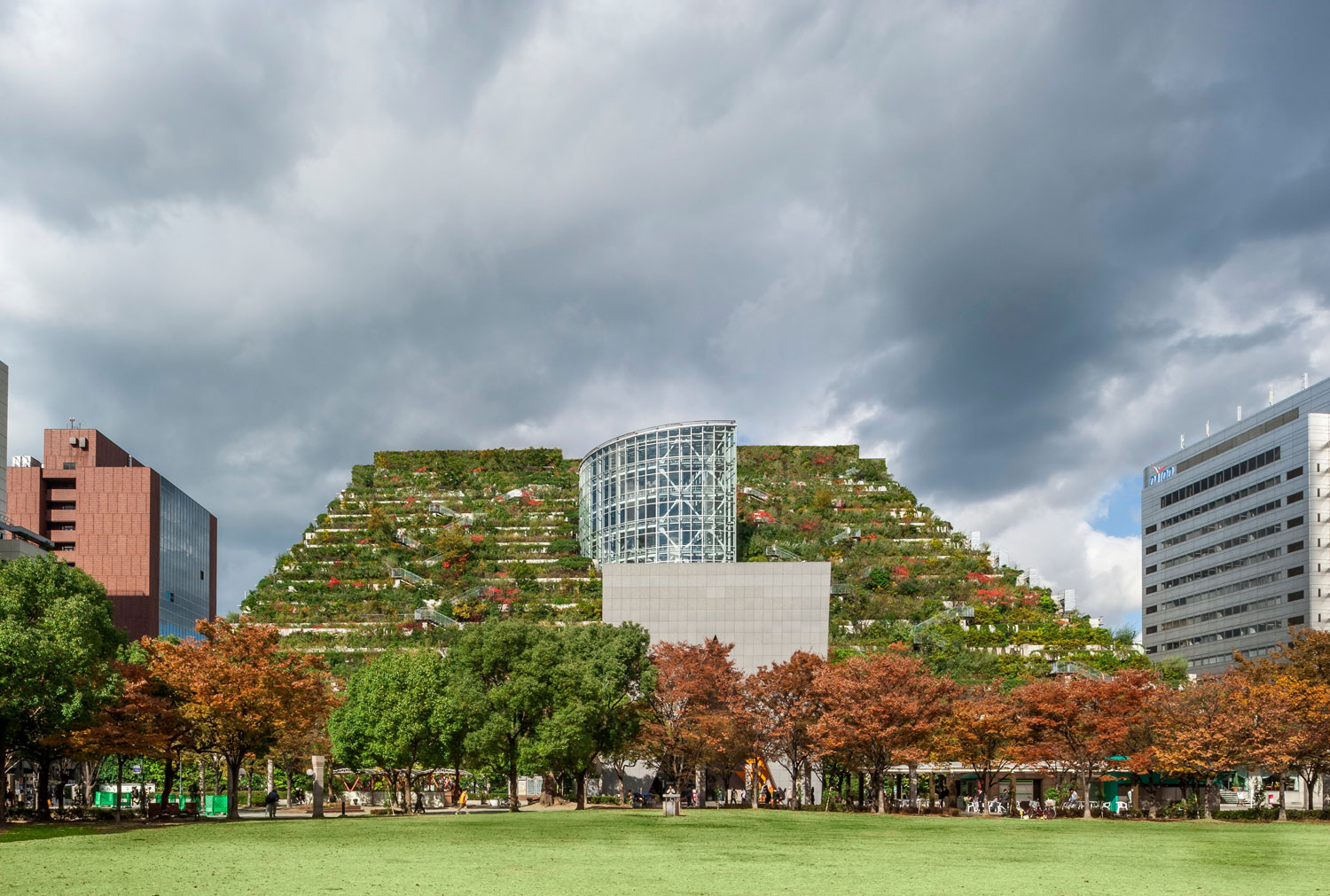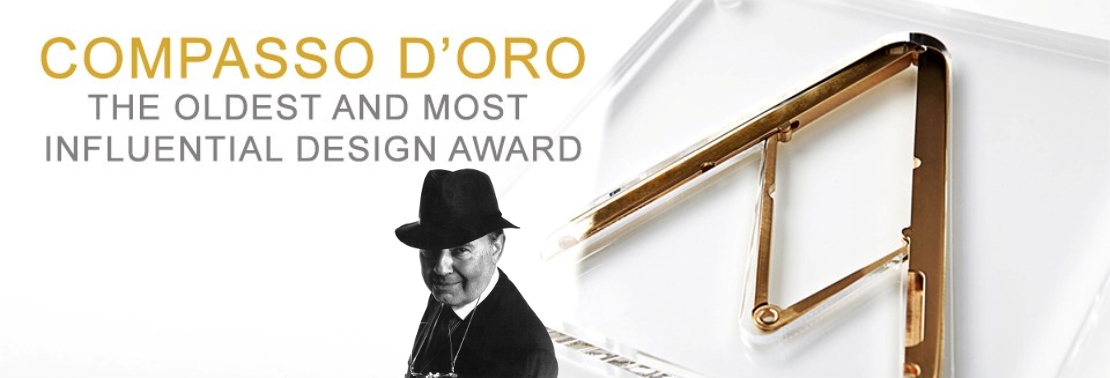Ferdinando Crespi of Ufficio Stampa writes:
Argentinian Emilio Ambasz, international champion of design and architecture, has been awarded the Compasso d’Oro during the ceremony for the 26th edition of the prize (one of the oldest and most prestigious Design awards in the world). Ambasz has registered over 220 industrial and mechanical patents. He is touched by the awarding of such a honour.
Milan, Italy – (September 15, 2020) – Streets, houses and office buildings in the whole world feature inventions and designs created by Emilio Ambasz. He is an inventor of high-level, surprisingly varied and extraordinarily successful objects, which have been awarded a great number of international prizes.
“I think that every project that doesn’t present new or better ways of living is immoral”
Emilio Ambasz
Architect
He holds 3 Compasso d’Oro (1981, 1991, 2001), 9 Industrial Designers of America Awards (IDSA), the IBD Golden Prize, the IF Design Award, the Annual Design Review of “Industrial Design” magazine (which he has been granted more than once), the ID Designer’s Choice Award, and many other rewards, not to mention the prizes gained for his pioneering architecture projects and green architecture creations. Emilio Ambasz reports of being “very proud of being granted such a prestigious, international honour” by the jury of ADI – Associazione per il Disegno Industriale, as “forerunner of the relationship between buildings and nature, he has created “live” manifestos of a culture that promotes sustainable development. He has explored the relationship between this cultural model and the processes of design through an unconventional poetics, bravely anticipating matters that are now extremely relevant. He is a strong advocate of the culture of design, and he has passionately promoted the knowledge of the best “Made in Italy” designs all over the world”.

Ambasz is well known for his polyhedric interests and creations in the world of design. He has invented highly efficient engines, modular furniture, street lamps, indoor lights, flexible pens, expandable suitcases, ergonomic door handles, wrist-computers, sinuous water bottles, folding notebooks, dental hygiene systems, a handkerchief-TV, office supplies, watercolour boxes and 3D posters.
His inventions in the field of seats are very significant, such as Vertebra, the first ever automatic, ergonomic chair in the world, which he created in 1975 and has been granted numerous awards, among which the Compasso d’Oro in 1981. Vertebra is now part of the permanent collections at MoMA and The Met in New York City, together with other creations by the designer. The design of the chair, which has been developed together with Giancarlo Piretti, has launched a new trend in the industry. In fact, Mario Bellini recalls “the surprise caused by his [Ambasz’s] sudden appearance in the world of Italian design with an innovative and significant concept that almost erased all that had been created until then”. Other chairs he created are Qualis, that was awarded the Compasso d’Oro in 1991, and Stacker (Gold Award at the International Forum for Design, 2003), to mention some.
The inventor has also been curator of Architecture and Design at MoMA, where in 1972 he organised Italy: the new domestic landscape, an exhibition of extraordinary success that put Italian design into the spotlight. He is honorary member of the American Institute of Architects and of the Royal Institute of British Architects.
The work of Emilio Ambasz has been presented during significant solo exhibitions all over the world, in order to celebrate his unicity, creativity and moral commitment: twice at The MoMA of New York and at the Triennale di Milano, at Reina Sofia in Madrid, in Tokyo, Geneva, Bordeaux, Zurich, Chicago, Philadelphia, Mexico City, San Diego and Saint Louis.
When Alessandro Mendini asked him whether Emilio represented the visionary architect, and Ambasz the pragmatic industrial designer, the architect answered: “Emilio is in distress, because he hopes that his architecture earns him the benevolence of angels. Ambasz is worried, because he wishes that his products are accepted by men”.

In any case, as Ettore Sottsass stated, “everything that Emilio Ambasz has designed shows the passionate research for a constant state of fluidity, the deep perception of a continuous process of change”.
Ambasz is an exceptional architect and designer. He is considered the father, poet and prophet of green architecture, which is now very much in vogue. According to Tadao Ando, “Ambasz’s research has inspired a new development in the recent success of many among his fellow architects”.
“For me, to design means to give a poetic shape to something pragmatic. Objects are created for the needs linked to our passions and to our imagination. Design is a mystical act whose role develops when functional and behavioural needs are already satisfied. It is the poetic principle at the core of creation”, comments Ambasz.
Such a commitment leads him to search the root and essence of a problem, and to solve the issue by designing each object so that it can erase every existing complication. “First of all, each and every one of my products is something that I personally need. Second of all, it is an extension of the body, a preliminary element needed to face an unfavourable situation that requires something that works as an intermediary, as a means to overcome it”.
Far from the spotlight, Emilio Ambasz continues his mission as visionary inventor. As Mario Bellini wrote: “I know he will keep surprising us with his ever present ability as a designer. It is stimulating to know that, somewhere out in the world, he is designing something or inventing another concept that, once again, could bring to a significant change in the world of design.
Nature and Architecture: Emilio Ambasz and Fukuoka’s ACROS center 25 years later
In 2020, the spectacular green architecture of the “Asian Cross Roads Over the Sea” – or ACROS – is celebrating its 25th anniversary. Located adjacent to Tenjin Central Park—the only green open space in that part of the city in Japan’s Fukuoka Prefecture—ACROS was designed by Argentinian architect Emilio Ambasz. Emilio’s innovative research and vision began over forty years ago and his design philosophy is “the Green Over the Grey.”

Image: Emilio Ambasz & Associates
Read more: Emilio Ambasz: Compasso d’Oro award for the international career
 Greenroofs.comConnecting the Planet + Living Architecture
Greenroofs.comConnecting the Planet + Living Architecture





